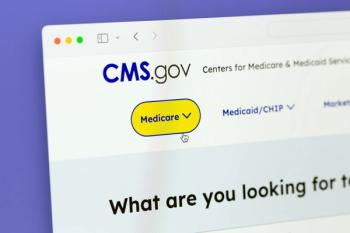
What's Next for the Digital Transformation of Healthcare?
Greater investment in AI and data security are among the keys.
The COVID-19 pandemic brought on an era in which nearly every activity of our lives went digital. And while many yearn for a return to pre-pandemic days in the healthcare business, the “new normal” is here to stay with even more progression from digital health (the gathering of information) to data-driven healthcare (actionable decisions based on the data). When this happens, organizations will need to demonstrate how this will improve healthcare services in quality, access and efficiency:
- Quality: guaranteeing the effectiveness of care and improving the experience of patients.
- Access: providing proactive care or facilitating entry into the healthcare system upon recognizing a need.
- Efficiency: improving healthcare processes and reducing per capita costs of healthcare while guaranteeing quality and access.
The digital transformation of healthcare will be key to achieving these objectives. Below are steps the healthcare industry needs to take to move from simply digital health to data-driven healthcare.
1. Identify and invest. Healthcare organizations need to invest further in AI and other related advanced technologies.Clinical workflows will become more agile by virtue of AI and advanced analytics that automate decision-making processes. The emergence of these technologies requires a transformation from digital health to data-driven healthcare given the fundamental role of data in automated decision making.
2. Improve big data analysis, data quality and availability. Technological devices generate huge amounts of data that can be analyzed to provide real-time clinical or medical care. To extract meaningful value, the data must feature 4 factors to provide important benefits including more accurate staffing; facilitation of chronic care; and a lower rate of medication errors.
- Relevance. Starting with the questions most critical to the business, identify the data needed to derive insights that will promote the attainment of organizational goals.
- Actionability. Data should provide enough insights into the future to become a clear roadmap for decision makers on what actions to take. This requires collecting data that is clean, complete, accurate, and correctly formatted for use across systems.
- Availability. All data necessary for efficient analysis should be easily accessible and readable. Incorrectly defined sharing restrictions can prevent skilled healthcare professionals from accessing pertinent information that could be helpful to patient care.
- Interoperability. Healthcare professionals need to regularly look through data from multiple sources. For thorough data analysis, health systems should be consolidated through the definition of a homogenous communication standard.
3. Embrace technology trends. When done systematically and on a large scale, relatively simple technology solutions will reduce the cost of improving health outcomes. The next generation of innovations including the use of AI and precision medicine, in combining big data analytics and machine learning (ML) algorithms, will enable us to leverage this data better and give rise to new use cases and ways of working.
4. Data security. For an adequate level of data protection, organizations need to follow a blueprint which should include setting up a dedicated corporate figure/committee to (1) monitor and assess regulatory compliance for data processing, (2) define and update data management policies, (3) provide training for those dealing with health data, and (4) implement “secure by design” information systems.
5. Skills development. Insufficient data analytics talent has been a perennial pain point for the healthcare industry. Significant investment in trained teams of data analysts, data managers, and data stewards will be needed to manage the gathering and analysis of data, while developers are needed in software development.
Even with all of these benefits to patient care, healthcare leaders will need to be prepared for some levels of resistance. The key is to communicate effectively with a seriousness of purpose why these advances matter and how their use will directly maintain and improve patient care.
Rebecka Axelsson Wadman is a principal at
Newsletter
Get the latest industry news, event updates, and more from Managed healthcare Executive.




















































